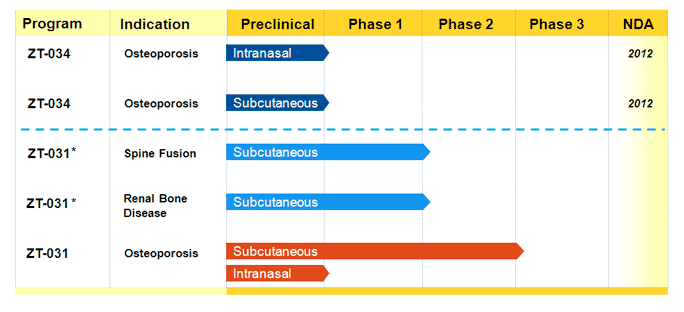In a unanimous decision, the United States Supreme Court decided yesterday that pharmaceutical and biotechnology companies may have an obligation to disclose adverse events to investors, even if the data is not statistically significant.
I previously discussed the case of Matrixx Initiatives, Inc. v. Siracusano on this blog and correctly predicted that the Supreme Court would uphold the decision of Court of Appeals for the Ninth Circuit. The result is a valid securities class action fraud claim that can now go to trial, or more likely, a financial settlement will be worked out.
You can read more on the background to this case in my previous post, but at issue was whether Matrixx Initiatives, Inc. (Matrixx) mislead investors by not disclosing reports that some consumers had lost their sense of smell (anosmia) after using Zicam Cold Remedy. Despite product liability lawsuits, complaints from consumers and medical scientists drawing the company’s attention to previous studies linking zinc sulfate (contained in the Zicam nasal gel) to loss of smell, Matrixx continued to be optimistic to investors about the company’s performance and prospects.
In the November 2003 Form 10-Q filed with the Securities and Exchange Commission (SEC), the company made no disclosure that two lawsuits had been filed over alleging use of Zicam had caused a loss of smell.
The decision in Matrixx Initiatives, Inc., v. Siracusano case has major implications for investor relations, public relations and corporate communications departments of publicly traded companies within the biopharmaceutical industry.
Under U.S. Securities and Exchange Commission (SEC) Rule 10b-5 companies have an obligation to disclose material facts related to statements that are made that could impact the purchase or sale of stock i.e. you have to provide all the information necessary to avoid a statement being misleading. This does not mean that companies have to share all material information about their products, they control what they say, but what they say has to contain all the material facts necessary for it to be truthful and accurate.
Say a major pharma company issues positive press releases at a major medical congress announcing great clinical trial results, while at the same time the Data Monitoring Committee (DMC) is meeting to terminate the study because the drug has too many adverse events. My reading of the Matrixx decision is that the company cannot make the positive statements without including the information about their concerns about adverse events. In those circumstances they might be better off not making the positive press releases, rather than potential misleading investors into buying stock on the back of this data, when the drug may end up being terminated shortly afterwards.
 As Justice Sotomayor states in her opinion, “the materiality of adverse event reports cannot be reduced to a bright-line rule.” Matrixx Initiatives, Inc. v. Siracusano, 563 U.S. ___ (2011) (slip op., at 1-2).
As Justice Sotomayor states in her opinion, “the materiality of adverse event reports cannot be reduced to a bright-line rule.” Matrixx Initiatives, Inc. v. Siracusano, 563 U.S. ___ (2011) (slip op., at 1-2).
The presence or absence of statistical significance is not the key factor as to whether an adverse event is material or not.
“A lack of statistically significant data does not mean that medical experts have no reliable basis for inferring a causal link between a drug and adverse events.”
(slip op., at 12). As Justice Kagan noted in her questioning at oral argument and Justice Sotomayor picked up in her opinion, “[t]he FDA similarly does not limit the evidence it considers for purposes of assessing causation and taking regulatory action to statistically significant data.” (slip op at 13).
Justice Sotomayor goes on to conclude that reasonable investors may also base their decision on non-statistically significant data. The challenge that the industry now faces is determining what information is “material” and needs to be disclosed. A bright-line rule of statistical significance would have made this easy.
Companies, their investor relations and public relations agencies are now faced with the question of what is “material”, and what is not. The guidance the court offers is that:
“assessing the materiality of adverse event reports is a “fact-specific” inquiry that requires consideration of the source, content, and context of the reports.”
(slip op., at 15, citations omitted). The Court notes this does not mean that “pharmaceutical manufacturers must disclose all reports of adverse events” only those for which “a reasonable investor would have viewed the nondisclosed information as having significantly altered the total mix of information made available” (slip op., at 15, citations and quotation marks omitted).
So should all adverse events be reported? That’s one possible way to avoid deciding what’s material, but Justice Sotomayor, clearly states that this is not the standard to be applied. She states,
“mere existence of reports of adverse events which says nothing in and of itself about whether the drug is causing the events – will not satisfy the standard.”
(slip op., at 16). What is needed is some link between the adverse event and the drug that suggests possible causality, what Justice Sotomayor describes as a “contextual inquiry.” She goes on to say that it is this contextual inquiry that can come from other sources or reports. In the Matrixx case this would have come from the filing of lawsuits, the concerns of academics about causal links, consumer complaints, the presentation of a scientific poster etc.
“This contextual inquiry may reveal in some cases that reasonable investors would have viewed reports of adverse events as material even though the reports did not provide statistically significant evidence of a causal link.”
(slip op., at 16). The conclusion from the Matrixx case is that publicly listed companies should be very careful of the information that they tell the market. As Justice Sotomayor notes:
“Even with respect to information that a reasonable investor might consider material, companies can control what they have to disclose under these provisions by controlling what they say to the market.”
(slip op., at 16). Whatever information is given to the market e.g. investor presentations at conferences, press releases, press briefings or SEC reports, the information should not be misleading through the omission of material facts.
What the Matrixx decision does is include adverse events as possible material facts, even those adverse events that have not been proved to be causal, or have reached statistical significance. The conclusion being that disclosure of adverse event data may need to be included, if the omission of this information could impact the decision making of a reasonable investor.
In practice, clinical departments and medical affairs will need to be more closely involved with investor relations, and judgments will have to be made as to what information is disclosed. Any time a judgment is required, there are likely to be differences in opinion as to what is “material” or not. Prudent companies should consider sharing more information rather than less, but how to do this in a way that does not overburden investors will be the challenge.

 As Justice Sotomayor states in her opinion, “the materiality of adverse event reports cannot be reduced to a bright-line rule.” Matrixx Initiatives, Inc. v. Siracusano, 563 U.S. ___ (2011) (slip op., at 1-2).
As Justice Sotomayor states in her opinion, “the materiality of adverse event reports cannot be reduced to a bright-line rule.” Matrixx Initiatives, Inc. v. Siracusano, 563 U.S. ___ (2011) (slip op., at 1-2).